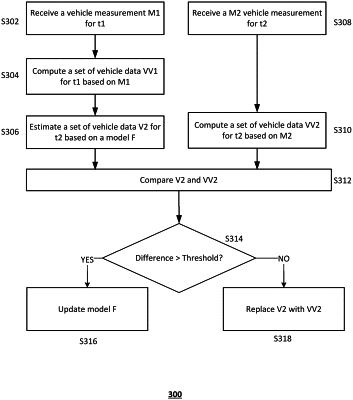| CPC B60W 50/0097 (2013.01) [B60W 40/105 (2013.01); B60W 40/107 (2013.01); G06N 20/00 (2019.01); G07C 5/008 (2013.01); G07C 5/085 (2013.01); B60W 2050/0031 (2013.01); B60W 2420/42 (2013.01); B60W 2420/52 (2013.01)] | 20 Claims |

|
1. A system for ballistically estimating vehicle data, comprising:
a communication interface configured to receive a first vehicle measurement taken at a first time point and a second vehicle measurement taken at a second time point; and
a plurality of processors, configured to:
estimate, by a first processor of the plurality of processors, a first version of vehicle data at a first speed for each of the second time point and a plurality of intermediate time points between the first time point and the second time point based on the first vehicle measurement using a machine learning prediction model;
compute, by a second processor of the plurality of processors, a second version of vehicle data at a second speed for the second time point based on the second vehicle measurement, wherein the first speed is faster than the second speed; and
determine whether to update the machine learning prediction model based on a comparison between the first version of vehicle data and the second version of vehicle data for the second time point.
|